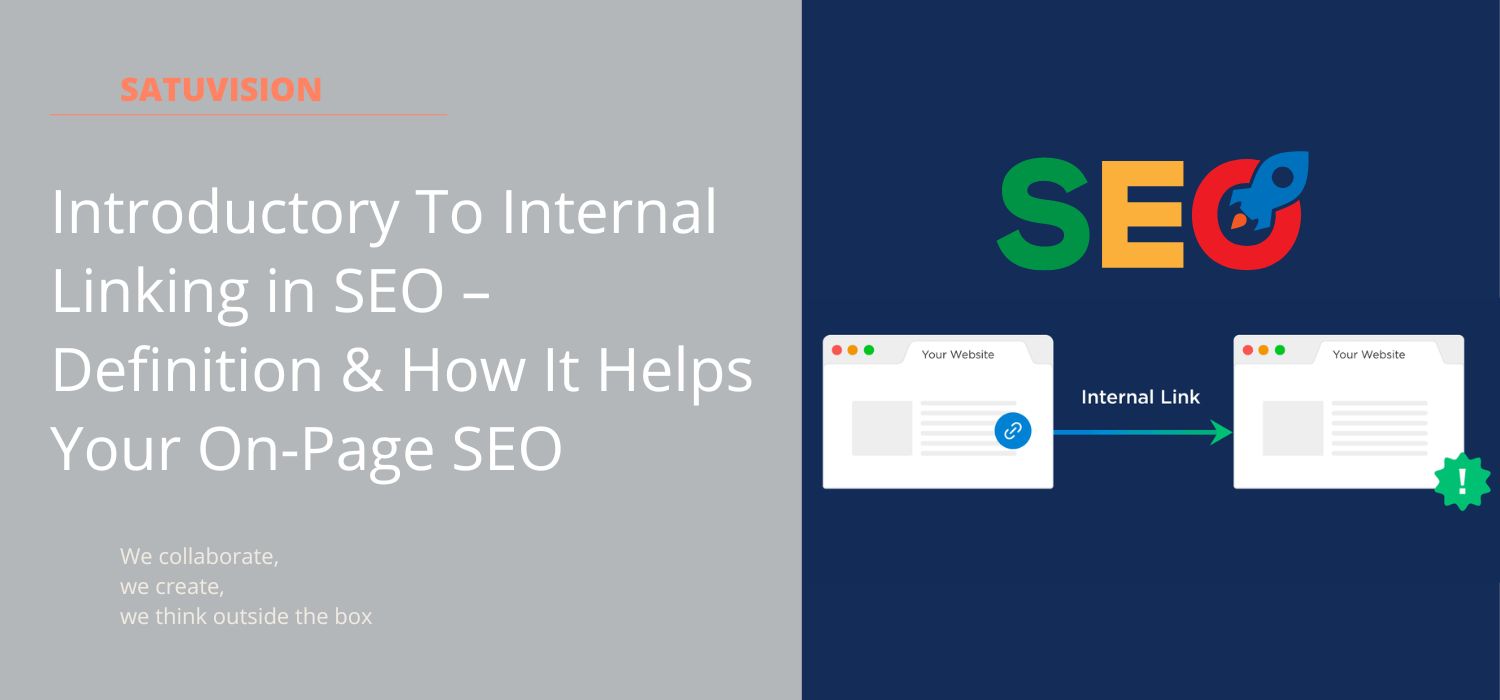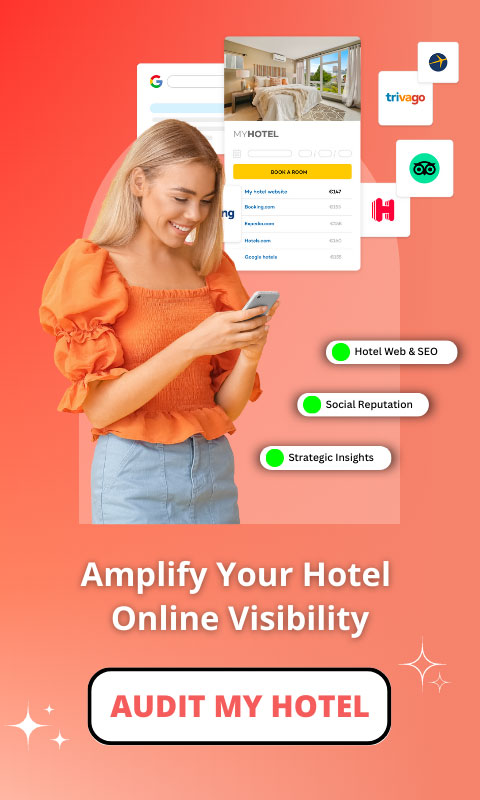2.1 Help distribute page authority to increase rankings
2.2 Improve Indexing
2.3 Improve page navigation for a better user experience
3.1 Contextual link & relevancy
3.2 Rich & descriptive anchor text
3.3 Don’t use the same anchor text
3.4 Don’t put too many anchor links
3.5 Optimize your site architecture
3.6 Add new links to old pages
3.7 Dofollow
Definition of Internal Linking
An internal link is a hyperlink from one page of your website to another page of your website. Basically, when users click on an anchor text with an internal link, those users are sent to another page within the same domain. Like backlinks, internal links also share authority from one page to another.
Code sample of an Internal Link:
<a href=”https://www.satuvision.com/”>SatuVision</a>
The anchor text on the link above is SatuVision.
Benefits of Internal Linking for SEO
Internal links are helpful for three main reasons:
- Help distribute page authority to increase rankings
- Improve Indexing
- Improve page navigation for a better user experience
Help distribute page authority to increase rankings
As we mentioned earlier, internal links also share page authority from one page to another. Page authority was developed by Moz, it estimated the ability of a specific page to rank on Search Engines.
Tips: We recommend internal linking your newly launched page (or your pages that have a low page authority score) to your pages that rank high on search engines or pages with a high page authority score.

Improve Indexing
A common problem faced by smaller or new sites is that they usually have problems indexing their pages. This is a normal occurrence because many search engines usually only provide sites with a crawl budget. The amount of crawls from a crawl budget varies depending on the size of the site. This is where interlinking comes in handy. Internal linking will help your pages to be crawled faster because when crawler bots reach a page on your website, they will use internal linking to navigate to other pages within your domain.
Improve page navigation for a better user experience
User experience is a very important ranking factor in many search engines. Internal linking makes it easier for your user to navigate your website and find relevant information. This means that internal linking also contributes to your page traffic.
Tips: You may link your product pages to your pages that generate traffic. However, it is important to remember to only do it when it is relevant. Also, don’t try to hard sell your products too much.
Internal Linking Best Practices
Here is a list of internal linking best practices:
- Contextual link & relevancy
- Rich & descriptive anchor text
- Don’t use the same anchor text
- Don’t put too many anchor links
- Optimize your site architecture
- Add new links to old pages
- Dofollow
Contextual link & relevancy
The pages between your internal link should be relevant or topically related. Contextual link means linking a page that is topically related, which may support the customer journey throughout your pages. This is important for user experience as well as for search engine’s crawler bot. We will elaborate on the last statement in our next point.
Rich & descriptive anchor text
A descriptive anchor text helps the search engines identify what your internally linked page is about. Search engines can identify website content from basic signals such as keywords, hence helping page rankings. At the end of the day, your anchor text needs to be natural for your reader. A rich & descriptive anchor text helps a reader understand what pages are internally linked.
Example of a rich anchor text:
Close-up image of a dog playing in the snow.
Example of a nonrich anchor text:
Good boy.
Don’t use the same anchor text for two or more different pages
Using the same anchor text for different pages can be harmful to your website. Why? Well, it’s because this causes confusion to both search engines and readers. For example, we have one page that talks about off-page SEO basics, and another that talks about on-page SEO basics. We do not want to use ‘SEO’ as an anchor text for both pages. Instead, we want to use a more descriptive anchor text. In this case, ‘Introduction to off-page SEO’ & ‘Introduction to on-page SEO’.
Don’t put too many anchor links
We talked about how anchor links can be used strategically to boost your less authoritative pages and it can be very tempting to flood your highly authoritative pages with internal links.
Having too many anchor links will affect your reader’s experience negatively. Some search engines have a recommendation for anchor links amount. Google, for example, recommends keeping it under 100 in an interview back in 2007.
Source: elite-strategies.com
Optimize your site architecture
Your site structure is basically established by your internal links. Site structure is the way you arrange the content on your website. How this content is organized, connected, and presented to visitors. Your home page is on top of your site structure, and you want all your pages to be as close as possible to the homepage. Pages that are closer to your homepage have a higher chance to be crawled by search engines’ spider bots and visited by visitors.
Tips: We recommend keeping your pages between 1-3 clicks from the homepage.
source: seoclarity.net
Add new links to old pages
Don’t forget about your old pages/blogs. Scanning old pages for internal linking opportunities is very important, you can revive old pages’ traffic by doing so. You can add links from your old pages to your new pages or vice versa.
Tips: We recommend doing this as a part of your SEO website audit to keep all your pages fresh.
Dofollow
Dofollow is HTML code that gives commands to a search engine’s spider bot to crawl or not to crawl a hyperlink. All links are Dofollow, to begin with, adding the code rel=’nofollow’ will convert Dofollow links into Nofollow. Page authority only passes if your internal link is a dofollow.
Here is an example of a Dofollow link:
<a href=”https://www.satuvision.com/”>SatuVision</a>
Here is an example of a Nofollow link:
<a href=”https://www.satuvision.com/” rel= “nofollow”>SatuVision</a>
Conclusion
In short, internal links are a crucial part of your on-page SEO effort since they can improve search engines’ understanding of your website as well as help with page rankings. You can direct search engines to important pages, and help describe what they contain using rich descriptive anchor texts. Internal links also provide a better user experience, may improve your website’s engagement, and potentially drive important traffic that generates conversions.





